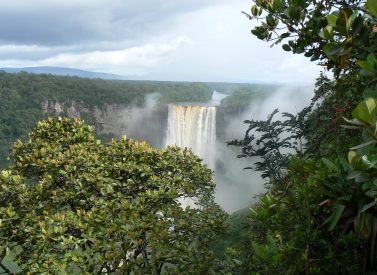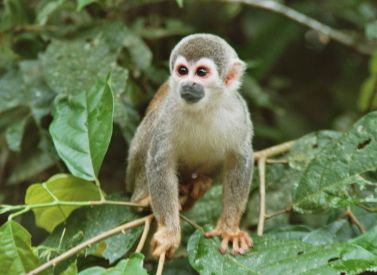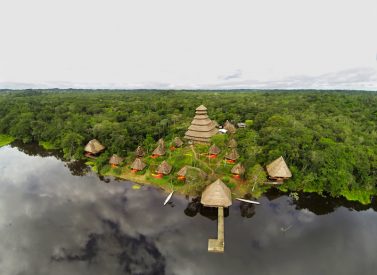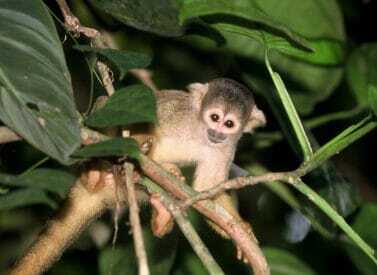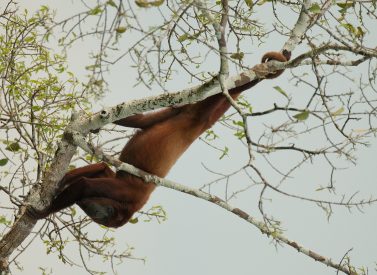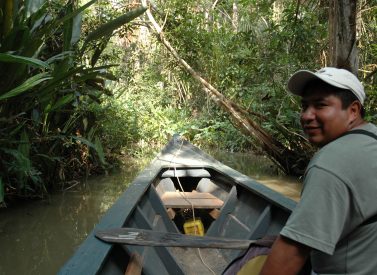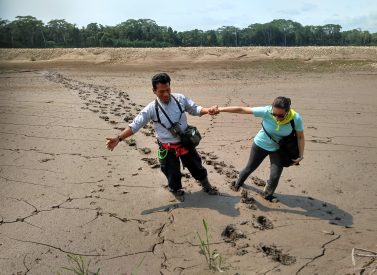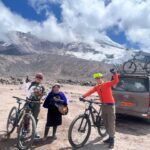Amazon Rainforest Travel Guide
 by Tom Shearman on 1st March, 2023
by Tom Shearman on 1st March, 2023
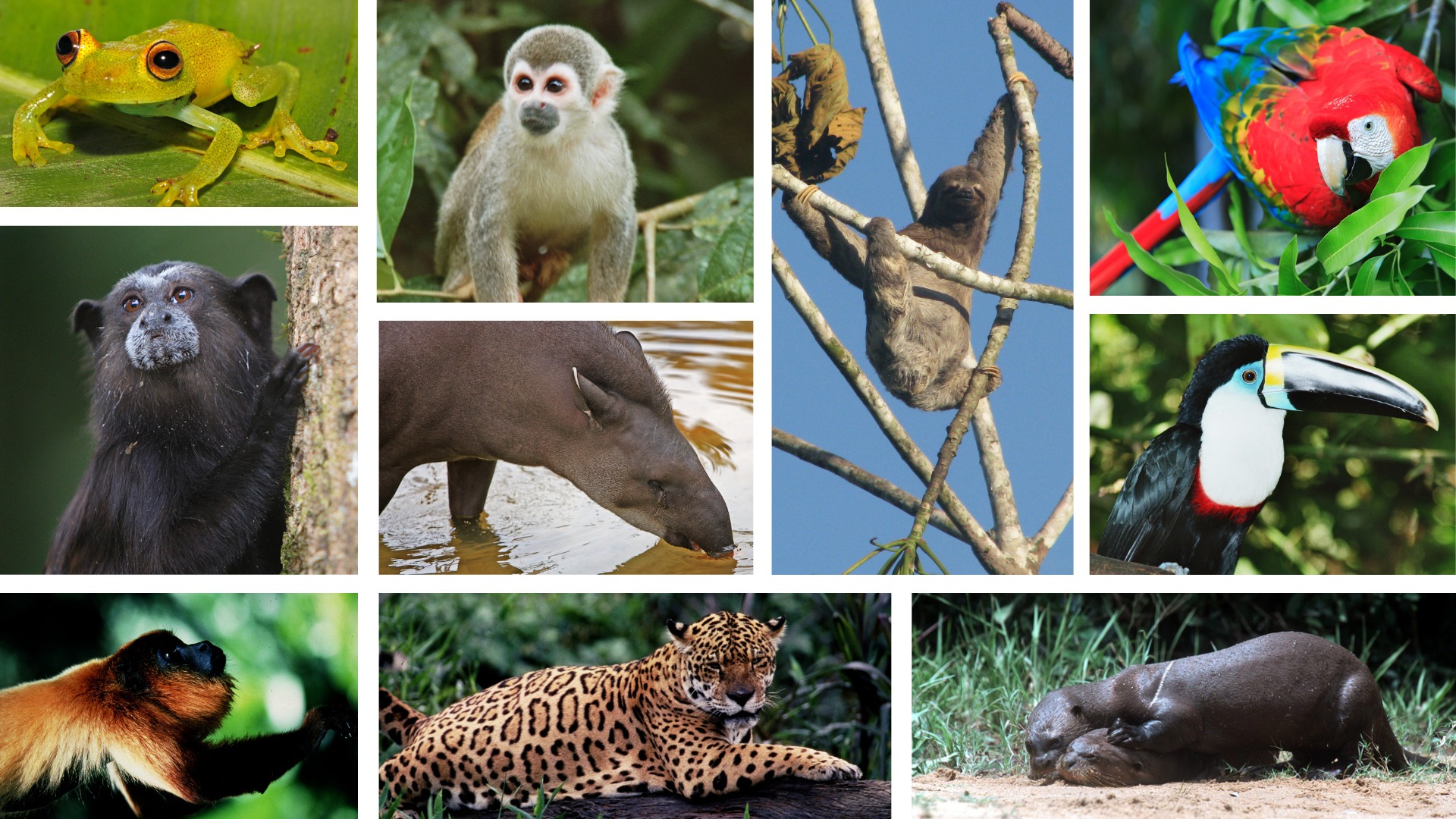
The Amazon rainforest is the world’s most famous wildlife habitat.
This iconic forest covers 6.7 million square kilometres, making it twice the size of India, and spans eight countries. Some 10% of all species on planet earth live in the Amazon, and more than two million indigenous people call this rainforest their home.
Join them, canoeing gently down the thousands of Amazon tributaries, looking for wildlife in a biodiversity hotspot that nourishes an estimated 400 billion trees.
Jaguars, monkeys, macaws, and hummingbirds are just some of the fantastic animals our guides will seek out on your adventure through the Amazon’s verdant canopy. In places, the vegetation is so dense it can take 10 minutes for the rain to hit the forest floor.
Comfortable lodges, surrounded by the sounds of the jungle, make for perfect slumber beneath the stars and trees of the Amazon. Or camp out for an authentic Amazonian field guide experience.
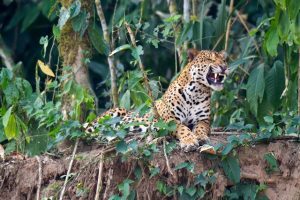
Animals, Plants, and Insects of the Amazon Rainforest
A panoply of bird songs will be your natural orchestra as you visit a land where time has stood still. The rainforest is a sensory delight, with unique sounds, sights, and smells at every turn.
Botanists, birdwatchers, and wildlife enthusiasts love the Amazon rainforest; there are more than 1,300 bird species, 430 mammals, 40,000 plant species, and 2.5 million different insects. Incredibly, a new species is discovered in the Amazon every 48 hours.
Choose from the pristine rainforest, savannah, cloud forest, or a combination. We offer a wide range of fantastically-appointed community eco-lodges in Peru, Ecuador, Bolivia, and Guyana, working with local people to ensure the Amazon’s long-term survival.
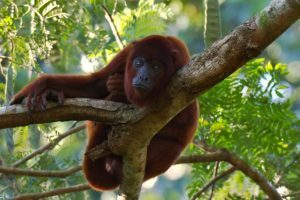
A Typical Day in an Amazon Lodge
Every day and night is different in the Amazon rainforest; you never know what you’ll see.
The excitement usually begins with an early start. Animals are most active around dawn and dusk, increasing your chances of seeing them. A jaguar prowling along the river banks, the cry of a howler monkey troupe, or seeing giant otters returning to their holt are just a few possibilities.
Wildlife-spotting activities include canoe rides on the river or around an oxbow lake, walking through the rainforest to a clay lick where birds and animals gather to feed, or climbing a canopy tower for a tree-top view.
It gets hot in the Amazon by mid-morning, when it’s best to do what the animals do; take it easy. Eco-lodges have hammocks for swinging in, libraries to read up on the fauna you’ve seen, and freshwater lakes for swimming.
As the afternoon cools, the animals and, therefore, visitors get active once more. Hop into a canoe or boat to look for animals coming to the water to drink. Alternatively, you may walk through the rainforest to a lookout point to watch a stunning sunset.
Most lodges also offer night-time walks nearby, one of the most thrilling parts of an Amazon visit.
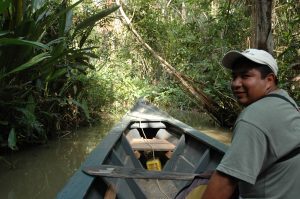
Fitness Levels for Visiting the Amazon Rainforest
Amazon rainforest trips are open to people of all ages and abilities, from children upwards.
Walks are often short because you stop to look for animals or listen to your guide’s explanation about plants or local cultures. You may be on your feet for two to three hours, and do ask for shorter hikes. Guides can often tailor activities to your group’s needs.
Boat rides can last an hour or two. You’ll need to be able to step in and out of a boat and sit in the same position for a time.
You can miss out on activities if you prefer swinging in a hammock, reading a book, or watching the wildlife around the lodge. Animals often wander close to the lodges.
Some lodges offer spa treatments and reflexology (at extra cost) if you prefer more downtime.
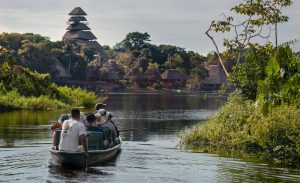
Amazon Rainforest Lodges: What to Expect
Amazon lodges are comfy sanctuaries dotted among the immense Amazon rainforest. The community-run lodges we use offer traditional designs with modern comforts. Most rooms have private bathrooms with hot water showers, mosquito nets, comfortable beds, and a ceiling fan.
There are often verandas or large windows so you can spot wildlife from your room, and some have hammocks.
Many lodges have electricity for lighting rooms and charging phones and cameras at specific points in the day. Some even have WiFi.
Communal areas include a bar, dining area, libraries, and wildlife-viewing platforms.
For the more adventurous, we also have camping trips. Rustic huts raised above the forest floor, protected by surrounding mosquito nets to keep out insects, invite you to enjoy the forest on a personal level.
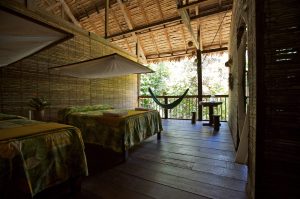
What’s the Weather like in the Amazon?
The Amazon rainforest is defined by heat and humidity, with occasional downpours befitting the area’s name.
There are wet and dry seasons, depending on where you visit. Many people prefer to visit during the dry season, although you will always experience rain in the rainforest.
The dry season is an excellent time to visit because many animals will come to watercourses to drink, making it easier to spot them on canoe rides.
Weather in the Amazon, as a general rule:
- Average daytime high temperatures range between 25°C and 34°C.
- Average night-time low temperatures are between 16°C and 22°C.
Peru and Bolivia’s dry season runs from May to September. The wet season lasts from November to April, accounting for 80% of annual rainfall.
Ecuador’s dry season is from December to March, with March to September being its wettest period.
Guyana is ideal for visits in February and March and August to January. There are two wet seasons in Guyana’s northern territories; from May to June and from December to January. The south’s wet season runs from May to July.
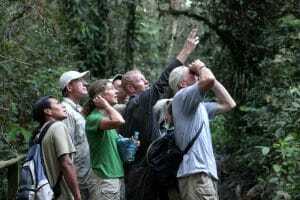
Who Will Be My Guide in the Amazon?
There are more than 400 different indigenous groups living in the Amazon, with around 300 indigenous languages throughout the region. Our community-run lodges are led by local guides who bring the rainforest alive for you.
Guides spot wildlife and explain how people use various plants and trees to co-exist and survive in this lush environment. They explain everything in English. We work with specialist bird-watching and photography guides for people with specific interests. Let us know your passion, and we’ll look for the most appropriate guide.
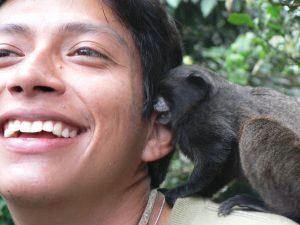
Taking Your Family to the Amazon Rainforest
Families love the Amazon rainforest. We have family-focused tours that fascinate children of all ages and satisfy the most active teenagers. Our family-friendly guides awaken a child’s curiosity about the natural world on tailored walks and workshops.
For example, smaller kids love visiting the animal rescue centre in Ecuador’s Liana Lodge, swimming in nearby rivers, and panning for gold. Older children can mountain bike in Peru’s Refugio Amazonas lodge, set camera traps, or even get a temporary rainforest tattoo.
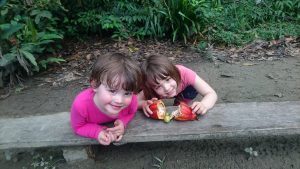
Travelling Around the Amazon Rainforest
Amazon rainforest visits make excellent extensions to your main trip. Most tours last three to five days, with seven to nine-day voyages also available.
Most destinations involve a quick 30-60 minute flight from a nearby city to a small, access town. Public buses are sometimes available and usually involve a 10-hour-plus journey in basic buses along bouncy, muddy roads.
After being picked up from the airport or bus stations, it’s onto the river for one to four-hour motorised boat journeys to your chosen lodge.
You use canoes and motorised boats to move around the Amazon and your legs to reach remote areas.
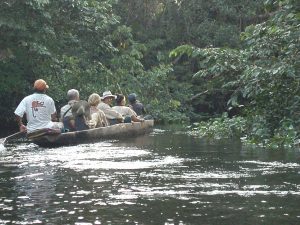
Read More Blogs About the Amazon Rainforest
- Spotting Jaguars in Peru
- A Typical Day in the Rainforest
- Swimming With Pink Dolphins in Brazil
- Wildlife Guide for Bolivia’s Madidi National Park
- Ecuador’s Best Amazon Lodges
- Visit the Rainforest or Cloud Forest?
- Rainforest With Kids: Liana Lodge, Ecuador
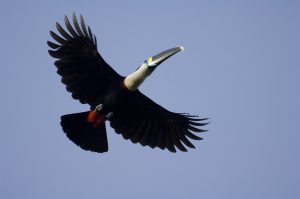
Things to Know Before You Visit the Amazon
There are a few practicalities to sort out before you head to the Amazon rainforest. A little preparation will ensure you have a comfortable and enjoyable visit.
Almost all dietary requirements can be catered for with advance notice. Vegetarians and vegans will enjoy the wide variety of fruits and salads available from the forests that surround the lodges.
Inoculations for the Amazon
You’ll need some vaccinations before you travel to almost all Amazon regions. We always recommend you contact your travel clinic for the most up-to-date information.
- Up-to-date diphtheria, polio, and tetanus
- Yellow fever (depending on the area you visit)
- Anti-malarial protection (Amazon trips below 1,500 m, depending on the area visited)
- Hepatitis A
- Typhoid
- Pre-exposure rabies vaccination
UK travellers can find information from the government’s Malaria Reference Laboratory.
US travellers can access Centers for Disease Control and Prevention.
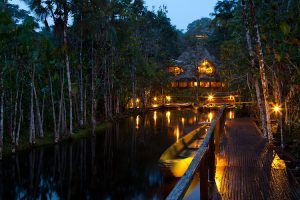
Amazon Kit List
Prevent bites by wearing long, loose-fitting clothing, and don’t forget the repellent! Sun cream, after-bite, a hat, sunglasses, and binoculars are all must-haves.
Here is a recommended kit list for people staying at a lodge with mosquito nets over the beds in private cabins. All bedding, toilet paper etc., is provided at the lodge (or camp, if camping).
Detailed kit list:
- The original and a photocopy of your passport.
- Good binoculars.
- Tight-weave, light-weight long trousers.
- Quick dry socks.
- Rain suit or long poncho (100% waterproof; test it before you leave home).
- Long-sleeved tight-weave shirts and T-shirts.
- A bottle or canteen to carry water on outings (1-2 litres).
- Sunscreen (factor 30+, with 50+ ideal) and lip salve.
- A broad-brimmed hat that will not come off on windy boat rides.
- 1-2 pairs of shorts.
- Sunglasses with UV filter.
- A pair of trainers.
- Insect repellent.
- Towel & wash-kit plus wet wipes/antiseptic hand-wash cream.
- Headlamp (plus spare bulb and batteries).
- Personal first-aid kit to include the following: painkillers, plasters (band-aids), moleskin, anti-biotic cream, after-bite (tiger balm), anti-diarrhoea tablets, throat lozenges, re-hydration salts & personal medication.
- Cash (small denomination bills) for souvenirs at the lodge, alcoholic beverages, etc.
- A small day pack, 30 litres.
- Camera and film/memory cards (take at least twice the amount you think you need!).
- Book, e-book, mp3 player/iPod or other to help pass the time.
- Spanish/English phrasebook.
- Extra snacks, e.g., cereal bars (chocolate bars will probably melt!)
Please note: Take clothes you don’t mind getting slightly dirty or wet. Sun cream, insect repellent, a hat and waterproof clothing should be carried in hand luggage and kept accessible for the journey to the lodge.
So, put on that explorer’s hat and journey into the wilds. The Amazon rainforest awaits you! Contact us for more.
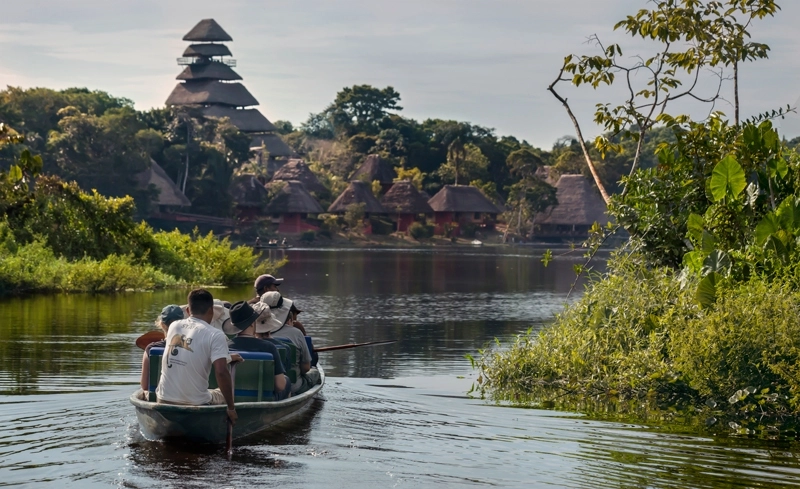


 a Group Tour
a Group Tour  a Tailor Made Tour
a Tailor Made Tour 